Wireless Li-Ion Charger Solution for Wearable Devices Includes Integrated Step-Down DC-to-DC Converter
The LTC4126 is a full-featured 7.5 mA wireless lithium-ion (Li-Ion) battery charger with a 1.2 V inductorless dc-to-dc converter designed for hearing aids, wireless headsets, and other space-constrained wearable products that require wireless charging. The LTC4126 can be combined with an LTC6990-based ZVS single transistor transmitter for a complete wireless charging solution.
Efficient Wireless Input Power Controller
Wearable devices are increasingly trending toward wireless battery charging, which improves the user experience by eliminating the need for cables or exposed connectors on the wearable. The LTC4126 charger, dc-to-dc converter features a wireless power controller that enables it to receiver power wirelessly from an alternating magnetic field generated by a transmit coil (such as in an LTC6990 solution). The wireless power controller rectifies the ac voltage from the receiver side resonant tank into a dc voltage at VCC pin. This dc voltage is fed to a linear charger, which regulates charge to the battery.
When the LTC4126 receives more energy than it needs, the wireless power controller regulates the input of the linear charger, VCC, by shunting the receiver resonant tank to ground. In this way, the linear charger operates at high efficiency because its input is kept just above the battery voltage, VBAT. The resonant tank also receives less power when the shunting circuit is engaged, as the resonant frequency is detuned from the transmitter frequency.
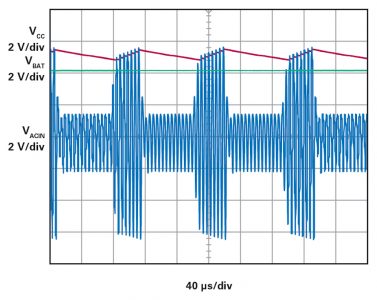
Figure 1. Rectification of ac input and regulation of dc rail voltage.
Full-Featured Linear Battery Charger
The integrated constant current (CC)/constant voltage (CV) linear Li-Ion battery charger in the LTC4126 ensures healthy charging cycles through a complete set of protection features, including automatic recharge, automatic termination by safety timer, bad battery detection, and out-of-temperature-range charge pausing. The LTC4126 includes charger status and battery voltage level signals that can be passed to the system microcontroller.
Inductorless Low Noise DC-to-DC Converter
The LTC4126 includes an integral inductorless charge pump dc-to-dc converter, which provides a regulated output to the system load from the battery. The LTC4126’s dc-to-dc converter can be turned on and off via its EN pin, enabling control by a microprocessor. The EN pin can alternatively be used in conjunction with the LTC4126’s PBEN pin to implement push-button control—no additional debouncing circuitry required.
The charge pump dc-to-dc converter features three modes of operation, depending on the battery voltage, to increase overall efficiency.
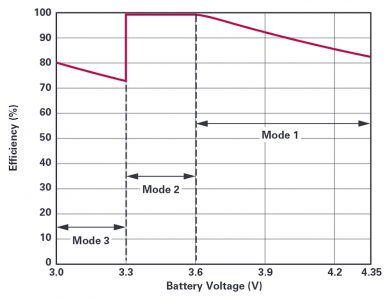
Figure 2. Theoretical maximum converter efficiency vs. battery voltage.
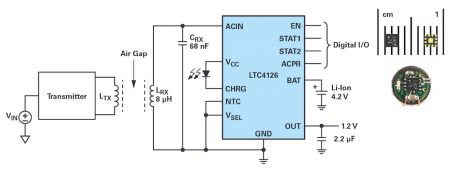
Figure 3. Complete 6 mm diameter wireless battery charger receiver with integrated dc-to-dc converter and charger status outputs.
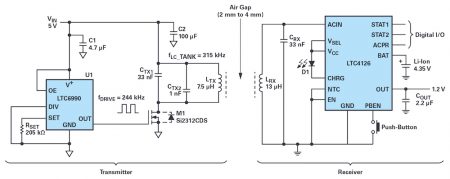
Figure 4. Complete wireless charging solution with single transistor ZVS transmitter and the LTC4126 receiver.
Complete Application Circuit on a Tiny PCB Board
Because of the LTC4126’s highly integrated design, only a few external components are required for a complete wireless charger receiver solution. At an application board size of 6 mm in diameter, an entire design can be fitted inside of hearing aids or earbuds.
Single Transistor ZVS Resonant Wireless Power Transmitter
The single transistor transmitter shown in Figure 4 is a simple resonant circuit using LTC6990 as the oscillator to drive the low power transistor. To achieve ZVS operation, the transmitter resonant tank frequency is set to 1.29 times the oscillator frequency. In this way, the switching loss is greatly reduced, and the overall wireless charging efficiency is increased. This transmitter requires only a few components and can be fitted into a small case.
Conclusion
The LTC4126 is a well-protected, highly integrated, and extremely compact wireless charger receiver solution ideal for wearable devices. A complete wireless charging solution is easily achieved by combining the LTC4126 (on the wearable side), with a ZVS single transistor transmitter based on the LTC6990 (on the charging station side). A full solution based on these devices features low power loss and low cost.
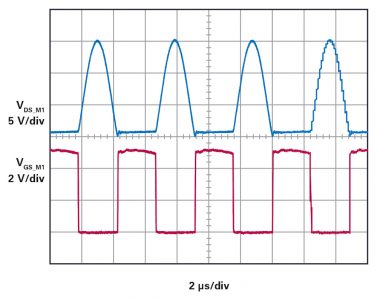
Figure 5. ZVS operation when fTX_TANK = 1.29 fDRIVE.
About the Author
Wenwei Li, Power Products Applications Engineer
Wenwei Li is a power products applications engineer at Analog Devices in North Chelmsford, MA. He received his B.E. degree from Hunan University in Changsha, China, in 2014, and his M.S. degree from the Ohio State University in Columbus, OH, in 2016. He can be reached at wenwei.li@analog.com.




